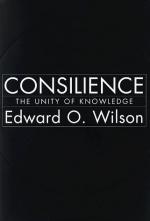
|
| Name: _________________________ | Period: ___________________ |
This test consists of 15 multiple choice questions and 5 short answer questions.
Multiple Choice Questions
1. When does sleep occur, in molecular terms?
(a) When REM begins.
(b) When serotonin is released in the brain.
(c) When certain chemicals decrease in the brain.
(d) When tryptophan is released in the brain.
2. What qualities of mind drove the techno-scientific age?
(a) Mathematics and industrialism.
(b) Curiosity and creativity.
(c) Compassion and empathy.
(d) Justice and equality.
3. How does Wilson describe ant colonies?
(a) As superorganisms.
(b) As the sum of their constituent ants.
(c) As a kind of controlled chaos.
(d) As interdependent systems.
4. Where do government policies typically originate, in Wilson's account?
(a) In politicians' thinking.
(b) In majority rule.
(c) In popular consensus.
(d) In experts in each field or region.
5. How does Wilson explain the ideal scientist's work ethic?
(a) Think like eagles, work like ants.
(b) Think like poets, work like bookkeepers.
(c) Think like children, work like fathers.
(d) Think like whales, work like minnows.
6. What religion was Wilson born into?
(a) Catholicism.
(b) Southern Baptism.
(c) Judaism.
(d) Protestantism.
7. How can science help us, in Wilson's account?
(a) Science can expand the limits of what we can see.
(b) Science can give us better stories to tell about psychological nature.
(c) Science can show us how our impressions are created by our feelings.
(d) Science can reveal the extent of human powerlessness.
8. How does Wilson characterize the current state of knowledge?
(a) Fragmented.
(b) Interconnected.
(c) Unified.
(d) Irreconcilable.
9. What does temporal-lobe epilepsy cause?
(a) Tourette's syndrome.
(b) Catatonia.
(c) Narcolepsy.
(d) Hyper-religiosity.
10. What is reductionism?
(a) The use of abstractions and generalizations to explain phenomena.
(b) The analysis of components of a system or problem.
(c) The analysis of the interrelation of all the parts of a system or problem.
(d) The study of the context for a system or problem.
11. What was it about armies that Wilson was struck by?
(a) How they were subsidized by communities or nations.
(b) How they were organized.
(c) How they were supported by an entire society.
(d) How they were close brotherhoods.
12. Wilson says that passion and emotion are both linked to what?
(a) Primitive desires.
(b) Eating and moving.
(c) Reason.
(d) Sleep and arousal.
13. Where does Wilson propose to test the benefit of consilience?
(a) In the history of knowledge.
(b) In social sciences and humanities.
(c) In epistemology.
(d) In religion.
14. How many cells comprise the brain?
(a) 1 trillion.
(b) 100 billion.
(c) No one knows.
(d) 100 million.
15. After considering all the different contexts for ants' communication, how does Wilson describe their form of communication?
(a) As socially conditioned.
(b) As instinctive teamwork.
(c) As released pheromones.
(d) As electrochemical resonance.
Short Answer Questions
1. What does science try to integrate, in Wilson's account?
2. Why does Wilson say that the concept of evolutionary progress is not easily defined?
3. What does science use as proof of a theory?
4. What field of questions does Wilson say remain unanswered?
5. What does Wilson say the standards that measure scientific knowledge should be based on?
|
This section contains 547 words (approx. 2 pages at 300 words per page) |

|




